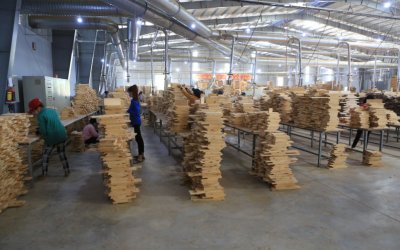Andy Church, CEO of Insight Quality, recently connected with Wendy Robbins, co-inventor of the Tingler head massager. In a small webinar, they spent some time unpacking the steps from ideation to execution.
The Foundation: What Do I Need to Get Started?
Even though an aspiring entrepreneur may believe they need connections or experience in the manufacturing world, the truth is that you really don’t. While having contacts or expertise will always help, there’s enough information available online for anyone to equip themselves and approach the industry with some confidence.
Simply doing research won’t prepare you for everything, but it will give you basic knowledge to make sound decisions when you chose your partners in legal, manufacturing, prototyping, and other areas.
If you can put your idea on the back of a napkin and explain it to someone from there, you have what it takes to bring that idea into reality as long as the product is something people will buy!
Looking at the Costs
Sometimes it’s the money that scares people away from getting into product development. That’s an understandable concern; aspiring entrepreneurs routinely get in massive amounts of debt to develop their product, often in the upper hundreds of thousands of dollars before they see a dime of revenue – and that’s if people like their product!
The secret is, it doesn’t usually take the cost of a house to test the waters. Andy and Wendy said that it usually only takes a few hundred dollars to cobble together a reasonable prototype – something that at least “kind of” works. The key is to create a tangible manifestation of your idea that you can show to engineers and potential investors.
You can start spending some money only after getting real validation from target customers that your product could work. Depending on the product, you’ll spend a thousand dollars or so getting a working prototype developed. Then, you’ll need a few thousand more to produce the first batch.
Depending on if you manufacture in the US or overseas, you may be looking at a minimum order quantity of one or two thousands units. And even if it only costs you two dollars per unit, that adds up pretty quickly.
Sometimes it’s wise to have your first products made in the US to have more control, smaller batches, and avoid any shipping or customs costs.
Andy mentioned that one of the biggest costs to avoid is the lost opportunity cost. People don’t often have confidence in themselves to reach for the stars, get their idea turned into a product, and start selling. Don’t fall into that thinking – anyone can do it with the right help!
Selling and Distribution Channels
The one catch to the “believe in yourself” mindset is that sometimes, the market simply won’t want your product “even if you get it manufactured exactly how you were envisioning it! That’s why it’s important to start small and only move forward after positive validation.
It’s indisputable that some ideas are better than others. “The best ideas are the ones that solve a problem,” Andy remarked. If your idea isn’t solving a new problem, it definitely needs to be different and unique. An idea to solve a problem is great, but that doesn’t mean that it will always translate into a real solution.
The problem with ideas is that they are worthless until they are executed, and sometimes it is impossible to know if a hypothetical product will be successful. That’s why testing your product’s viability and knowing your target audience is crucial.
To learn more about testing your product idea and the product itself, read up on the lean startup movement.
Where to Start Selling
Amazon, eBay Etsy, or social media platforms are all common places that a new product can gain traction. The best platform(s) for you to sell in depend on your product.
What most people don’t realize when they buy something from Amazon is that it’s often stay-at-home parents, hobbyists, or small businesses that they purchase from due to the variety of suppliers. Larger suppliers and retailers still have a presence, but the “little guy” is what made Amazon successful.
Comments and reviews always come into the discussion when looking at distribution channels. Comments and reviews will make or break the perception of your product, which is why Andy stresses ordering a small batch at first. A smaller batch means fewer negative reviews, and allows you to adjust whatever isn’t working for your next order.
Big Picture Planning and Timelines
Many entrepreneurs are concerned with protecting their idea from day one, before they even have a tangible product. This is understandable, but the most important thing is developing a relationship of trust with your factory in China. It will become more important to protect your idea once your product is gaining traction.
An option that Wendy mentioned is obtaining a provisional patent for your product. A provisional patent is much more easy, affordable, and fast to obtain and will act as a placeholder for your patent to give you time to test the product.
Another strategy to avoid sharing your full intellectual property is to have a part of your product manufactured at one factory, and then use a separate factory for the other part.
Time and Money
If you want to turn an idea into a product and get it on a digital shelf in Amazon, you are probably looking at a year and a half to develop the product, find a factory, test it, and readjust. A full two years is more likely if you want to sell a product in any stores because they typically nail down their selection around six months out.
Just because you have a great idea doesn’t mean that you have the money to execute it, and Wendy can relate. When she started with the Tingler she had to look at US companies that she could negotiate with and show potential to because the money wasn’t there. As her product gained traction, she was able to give her factory millions of dollars in business because they gave her a chance!
Final Thoughts
- If you have an idea, try it!
A lot of what keeps people from success is the fear of trying and failing. Start small and scale up later if the idea proves to be successful.
- Ask questions
If you tap your network deeply enough, you’ll find people that would love to help a newcomer and are just waiting for you to ask questions.
Please reach out to us if you have questions about product development or finding a factory! We’d love to help you along in the journey from idea to reality.




0 Comments